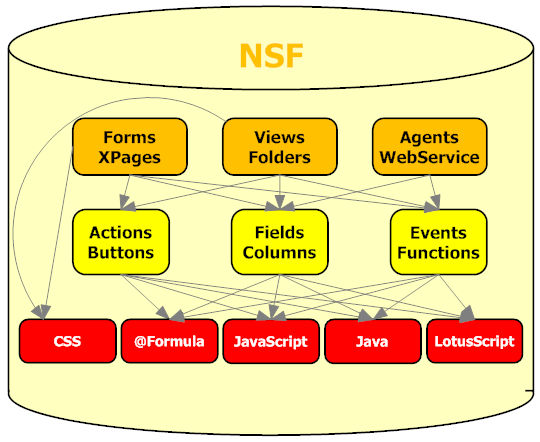My Blog in 50 words
Posted by Stephan H Wissel on 24 December 2008 | Comments (0) | categories: After hours
Usability - Productivity - Business - The web - Singapore & Twins
Posted by Stephan H Wissel on 24 December 2008 | Comments (0) | categories: After hours
Posted by Stephan H Wissel on 23 December 2008 | Comments (2) | categories: IBM Notes Lotus Notes XPages

Posted by Stephan H Wissel on 23 December 2008 | Comments (1) | categories: IBM Notes Lotus Notes
Posted by Stephan H Wissel on 22 December 2008 | Comments (2) | categories: Show-N-Tell Thursday

Posted by Stephan H Wissel on 21 December 2008 | Comments (2) | categories: After hours

Posted by Stephan H Wissel on 20 December 2008 | Comments (0) | categories: After hours
// The external context gives access to the servlet environment
var exCon = facesContext.getExternalContext();
// The writer is the closest you get to a PRINT statement
// If you need to output binary data, use the stream instead
var writer = facesContext.getResponseWriter();
// The servlet's response, check the J2EE documentation what you can do
var response = exCon.getResponse();
// In this example we want to deliver xml and make sure it doesn't get cached
response.setContentType("text/xml");
response.setHeader("Cache-Control", "no-cache");
// Here all your output will be written
writer.write("<?xml version=\"1.0\" encoding=\"UTF-8\"?>\n<christmas date\"24Dec\" />");
// We tell the writer we are through
writer.endDocument();
facesContext.responseComplete();
writer.close();
// Update:On 8.5.2 or later writer.close() seems not be necessary/be rather harmful. Read the revisited entry
Posted by Stephan H Wissel on 19 December 2008 | Comments (19) | categories: Show-N-Tell Thursday XPages
Posted by Stephan H Wissel on 18 December 2008 | Comments (4) | categories: IBM Notes Lotus Notes
Posted by Stephan H Wissel on 17 December 2008 | Comments (0) | categories: After hours
Posted by Stephan H Wissel on 17 December 2008 | Comments (3) | categories: Linux
Posted by Stephan H Wissel on 16 December 2008 | Comments (0) | categories: After hours
Posted by Stephan H Wissel on 10 December 2008 | Comments (4) | categories: After hours
Posted by Stephan H Wissel on 09 December 2008 | Comments (0) | categories: IBM Notes Lotus Notes Show-N-Tell Thursday
Posted by Stephan H Wissel on 09 December 2008 | Comments (0) | categories: IBM - Lotus

Posted by Stephan H Wissel on 07 December 2008 | Comments (1) | categories: IBM Notes Lotus Notes Show-N-Tell Thursday SYWTBADD
Posted by Stephan H Wissel on 07 December 2008 | Comments (2) | categories: Linux
Posted by Stephan H Wissel on 07 December 2008 | Comments (1) | categories: After hours
Posted by Stephan H Wissel on 05 December 2008 | Comments (1) | categories: IBM Notes Lotus Notes
tmp := @DBLookup("Notes":"NoCache";"";"(LookupProjectsBySponsor)";@UserName;2);
@if(@IsError(tmp);"You don't sponsor projects"; tmp)
change it to
@if(!@IsDocBeingEdited;@Return(@ThisValue);"");
tmp := @DBLookup("Notes":"NoCache";"";"(LookupProjectsBySponsor)";@UserName;2);
@if(@IsError(tmp);"You don't sponsor projects"; tmp)
You can refine that and not populate keywords you don't intend to change (based on a status), you would update the first condition then.Posted by Stephan H Wissel on 03 December 2008 | Comments (2) | categories: Show-N-Tell Thursday